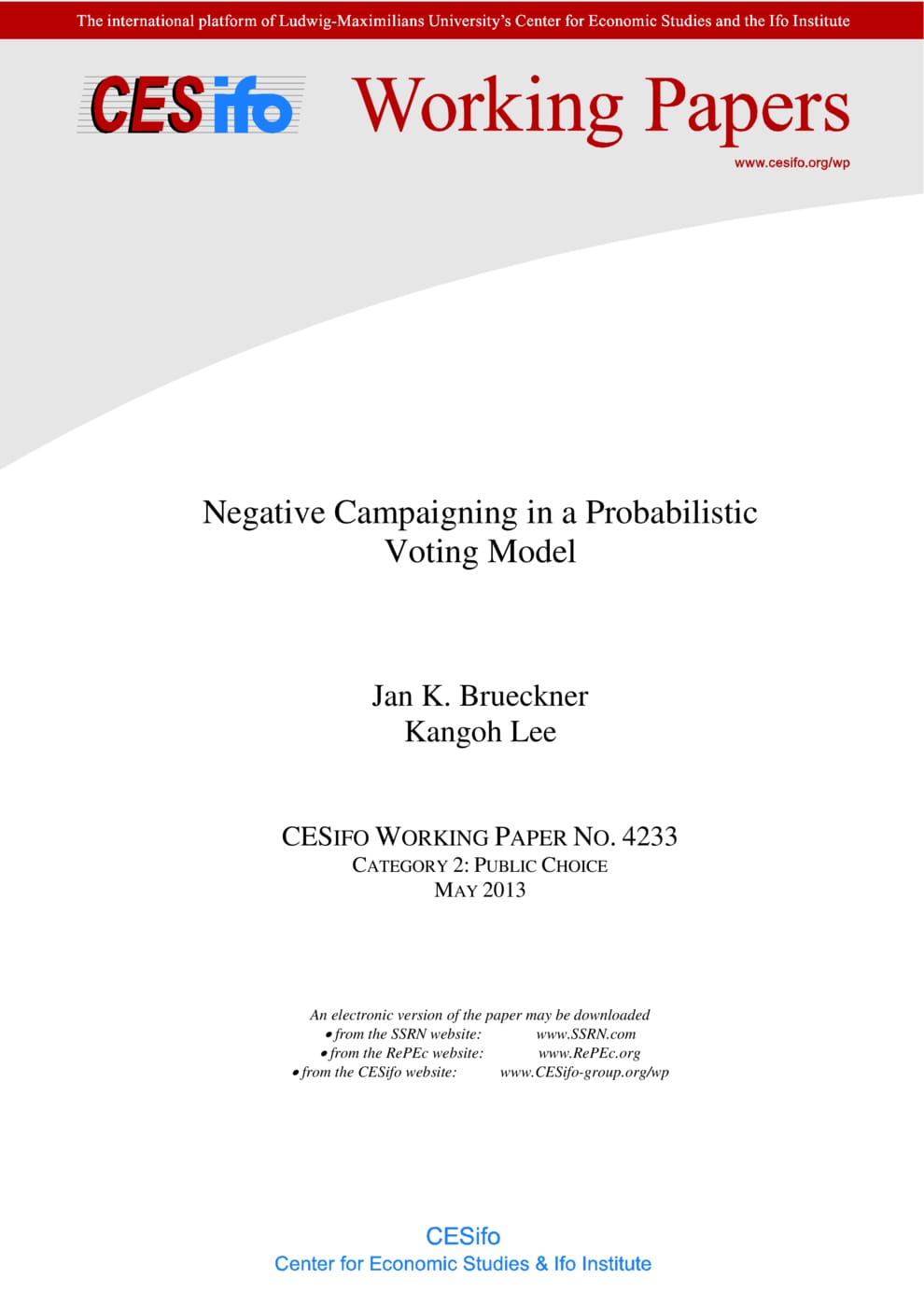Negative Campaigning in a Probabilistic Voting Model
CESifo, Munich, 2013
CESifo Working Paper No. 4233

This paper extends the small existing theoretical literature on negative campaigning, building on work by Harrington and Hess (1996). While their analysis explores the determinants of negative campaign spending using a classic spatial voting model, this paper relies instead on a probabilistic voting model, extending the use of this popular model to a new setting. By using two different versions of the model based on different assumptions on the targeting of campaign spending, the paper generates a host of results. However, the main lesson, which emerges in fairly robust fashion regardless of specific assumptions, is that negative campaign spending is higher for the relatively centrist candidate. The more-extreme candidate in the electoral contest devotes, by contrast, comparatively more of her funds to positive campaign spending. This result, which at first appears unrelated to the main findings of Harrington and Hess (1996) and Chakrabarti’s (2007) extension of their model, is actually consistent with their results upon deeper examination.
Public Choice
Public Finance